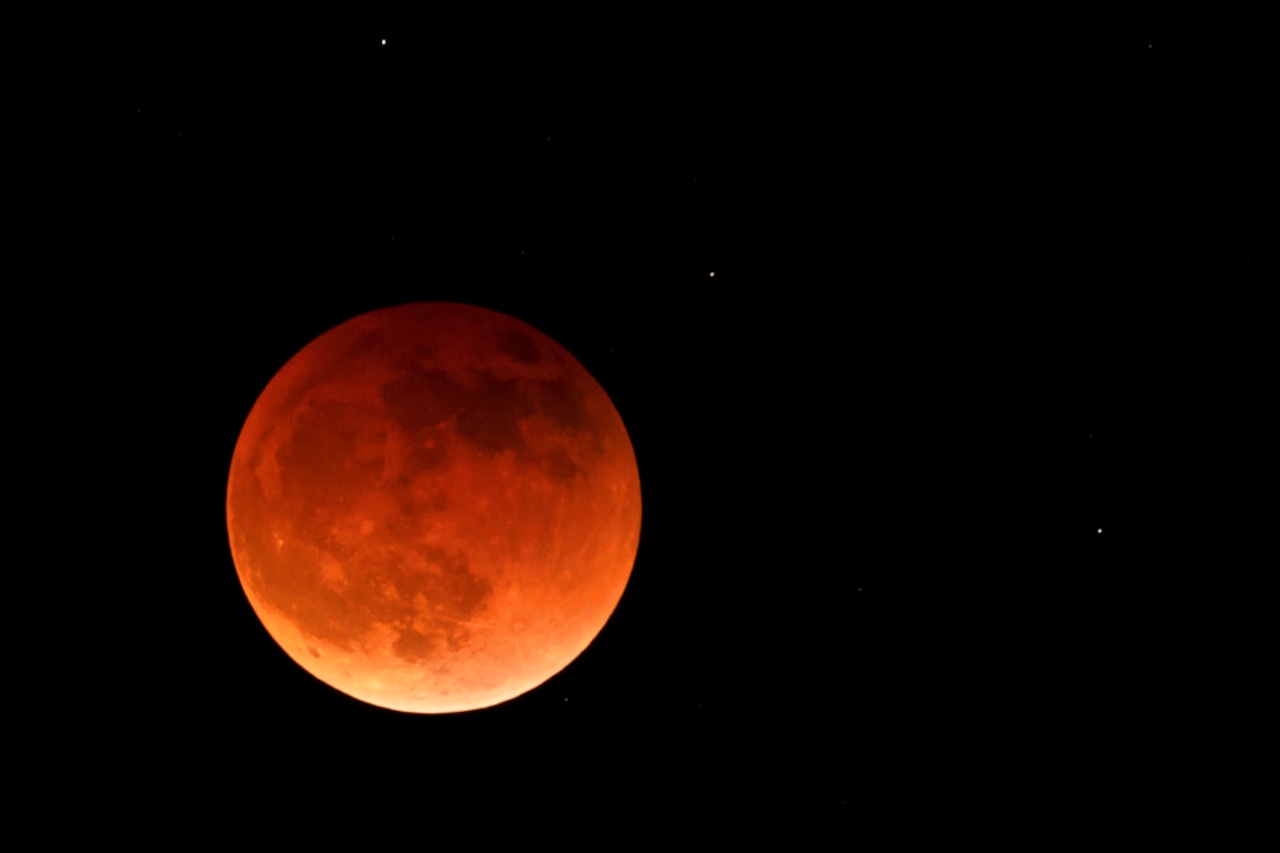
Even though Tuesday’s moon is expected to be full, it is also likely to look as though it has a bite taken out of it.
This year’s Harvest Moon is expected to emerge on Sept. 17, peaking at around 10:34 p.m., according to the Farmer’s Almanac. The Harvest Moon is one of the three remaining supermoons of 2024.
Ten minutes later, part of the moon is expected to darken in what will be a partial lunar eclipse, according to the website EarthSky. However, unlike the April 8 total solar eclipse, nobody on Earth will need protective glasses, as this eclipse will be seen only at night and people will be looking at the moon, not the sun.
Both of these celestial events are common at this time of year, though a third factor is joining the cosmic party: a blood moon.
The partial lunar eclipse will lead to what is anticipated to be a “quite rare” event, Teresa Monsue, an astrophysicist at NASA’s Goddard Space Flight Center, told NPR
“Aside from the small darkened portion at the top of the moon’s disk, most of the visible lunar disk will be in Earth’s penumbra, the lighter portion of the planet’s shadow that does not entirely block the sun’s light,” Monsue said.
Earth’s shadow should appear on part of the moon, appearing as though a bite has been taken out of it, Space.com reported. As the moon passes behind Earth, it should look red.
For anyone in Massachusetts who is interested in seeing the lunar trifecta, it could get tricky.
Cloud cover moving from the south to the north could affect seeing the moon, according to the National Weather Service.
Along with an increase in overnight temperatures, it leaves room for a small chance of rain on Wednesday.
AccuWeather predicts that there could be close to a 100% chance for cloud cover in Worcester, Boston and Springfield between 10 and 11 p.m.
If it stays this way, there are still ways to watch the moon’s transformation. Time and Date and the Italian-based Virtual Telescope Project will both offer streams of the moon going from luminous supermoon to bloody and bitten during the eclipse through their respective YouTube channels.
After Tuesday’s supermoon, the last two of 2024 are expected on Oct. 17 and Nov. 15, according to EarthSky.






